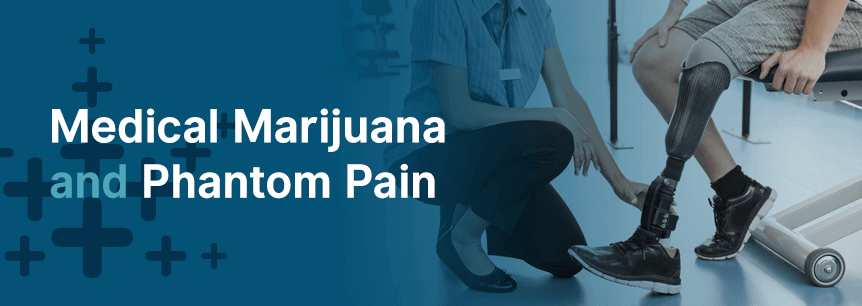
For patients dealing with physically and mentally debilitating effects of phantom pain, medical cannabis offers real relief. Phantom pain can impact a person’s quality of life, and it affects around 50 to 80 percent of all amputees. Fortunately, medical cannabis can mean relief from this life-altering, persistent pain. Continue reading to learn more about phantom pain and how medical marijuana and phantom pain treatment can help with symptoms of pain, itching, depression and other unpleasant symptoms of this condition.
Phantom limb pain is neuropathic pain people can experience after they have a limb surgically amputated. The pain usually links with feelings the limb is still attached to your body. It’s often hard to distinguish between phantom pain and stump pain, the latter of which happens when you experience pain in the remaining stump following amputation.
The condition affects both men and women similarly. It also occurs independently of the side, age or level of amputation. Individuals with brief pre-amputation pain and those who didn’t have pain in their limb the day before their amputation have a substantially lower occurrence of phantom pain.
Phantom pain also affects children. Studies have shown it’s present in a minimum of 20 percent of congenitally limb-deficient kids, who are children born without a limb, and in 50 percent of all kids who undergo amputation surgery before they reach six years old.
Chronic pain can be an incapacitating condition, affecting every area of your life. It can cause the simplest of tasks, such as tying your shoes or buttoning your shirt, to be a struggle. Over time, chronic phantom pain can take a genuine toll, and you could find yourself feeling depressed and down because of your continuous struggle with the pain.
You can feel numerous forms of phantom pain sensations when you have an amputation.
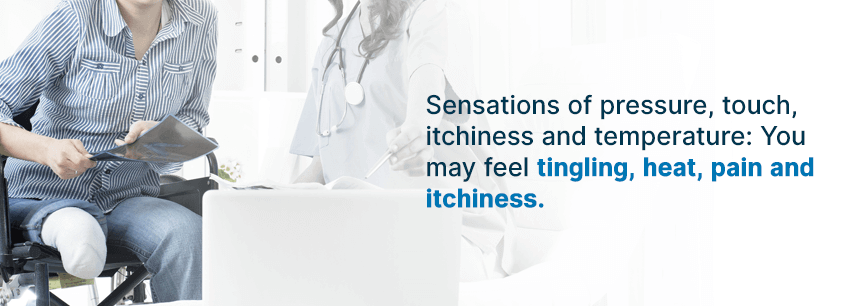
Unlike pain resulting from limb trauma, experts believe phantom limb pain is due to mixed signals from your spinal cord or brain. It is an essential notion to consider since the treatment for phantom pain differs from the treatment you’d receive for other types of pain.
As with any pain, you might find certain conditions or activities will trigger phantom pain. Some triggers may include touch, angina, smoking, changes in barometric pressure or exposure to cold. You can’t prevent barometric pressure from changing, but you can understand your phantom pain may be more severe on days where the weather makes a significant shift.
If you begin noticing any particular things that trigger a phantom pain episode, let your doctor know. You may be able to avoid some triggers by quitting smoking or preventing constipation. For other triggers, however, you’ll have to figure them out and treat accordingly.
Phantom pain characteristics include:
Along with the pain, you could also sense other sensations from a missing body part such as:
Your phantom pain symptoms may present shortly after amputation surgery, and they could last for seconds or extend for days. Most people find the duration and frequency diminishes during the initial six months, but some people have phantom sensations or pain for years following their amputation.
Phantom pain complications aren’t numerous, because phantom pain itself is a limb amputation complication. However, you might find sleeping difficult or develop emotional anxiety or depression from your condition. In some cases, neuromas, a form of growth, could develop on your amputated nerves and increase your pain.
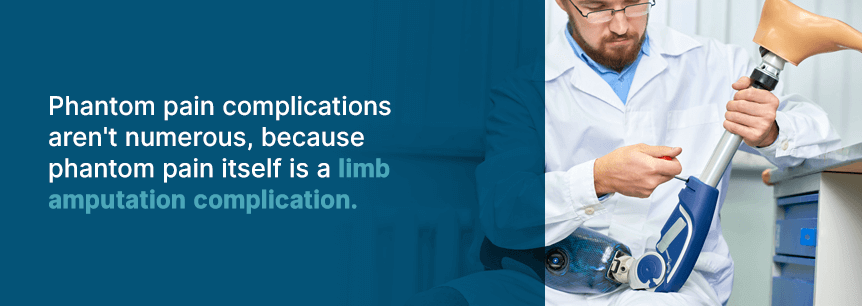
For some individuals, phantom pain starts getting better over time without being treated. For others, it can be challenging to manage phantom pain. Your doctor will work closely with you to address your phantom pain with medicine or other therapies.
Treating phantom limb pain effectively requires a multipronged approach involving various medicines combined with non-medicine treatments. This combination of medicine/non-medicine is similar to the treatment of other painful conditions. New phantom pain therapies all include attempting to change the spinal cord or brain signals.
Several different medicine categories can reduce your pain, each of which affects various types of pain sensations. Some medicines your doctor may prescribe you and their side effects include the following.
Some of these medicines work best if you combine them with other drugs and if you take them at specific times of the day. For instance, antidepressants usually work best if you take them at bedtime, and are often also useful in combination with anticonvulsants. Finding the proper medicines with the fewest side effects requires working closely with your doctor.
Complementary or alternative therapies could help reduce phantom pain. These include:
A newer therapy to treat phantom pain researchers are studying is virtual reality goggles. This treatment uses goggles with a computer program to mirror your intact limb to look like you do not have an amputation. When wearing the virtual reality headset, you move your virtual limb around to perform various tasks.
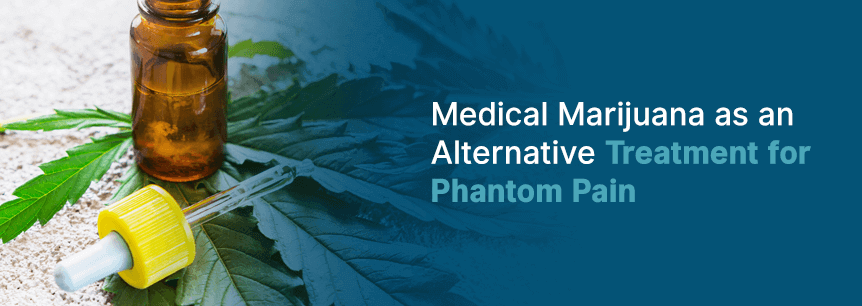
Because phantom pain can be challenging for doctors to treat, patients are looking to medical cannabis to offer relief. The endocannabinoid system (ECS) consists of CB1 and CB2 receptors located all over your body. Researchers believe the ECS provides a connection between mind and body, promoting a state of balance or homeostasis. When you have a health problem, this balance becomes damaged, but marijuana’s cannabinoids can act with the receptors to restore balance.
Since phantom pain involves the pain sensation, even when there isn’t a limb there, experts believe dosing with medical marijuana for phantom pain could help relieve the condition’s symptoms. A study Neurology published in 2007 showed medical cannabis decreased individuals’ pain by more than 30 percent in just five days.
Individuals also prefer to use medical weed over pharmaceutical medicines, since opioids doctors commonly prescribe for pain can lead to severe and debilitating side effects, including addiction. Some of these medicines make it hard to perform everyday tasks and could even lead to a deadly overdose.
According to the National Institutes of Health, chronic pain is one of the most common causes of long-term disability. Advocates of medical marijuana claim it’s an effective way of relieving chronic pain. Once you ingest cannabis, its cannabinoids open specific receptors in your body so the medicine can begin providing you relief.
Strains for pain include:
Itchy skin is an uncomfortable, irritating sensation causing you to feel the need to scratch. It’s another symptom of phantom pain that, when chronic, can impact an individual’s mental well-being profoundly.
Clinics in Dermatology published a study showing far more people with idiopathic generalized itchy skin had symptoms of depression compared with controls. Marijuana and phantom pain acts on various fronts to reduce the hyper-proliferation of cells, decreasing the itch.
Anti-itch strains to try are:
Research shows medical cannabis can help ease anxiety. Researchers found there to be a lot of promise in lower doses of CBD for anxiety, OCD, panic attacks and PTSD.
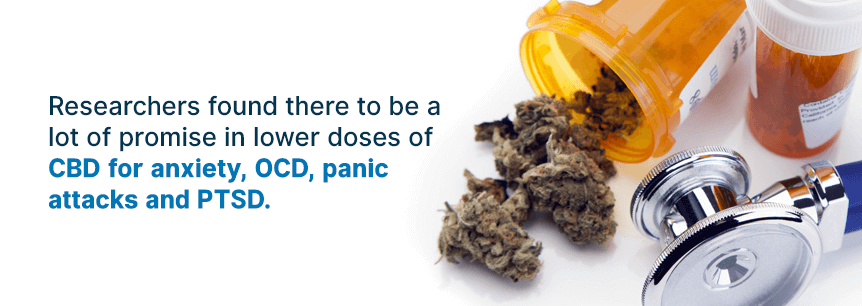
Strains to try for anxiety are:
As mentioned earlier, depression can occur in some phantom pain patients. Depression can severely impact your quality of life, making you feel constantly unhappy or miserable. Individuals have been using cannabis for many years to relieve their depressive symptoms. One survey of 4,400 individuals showed those who used the herb had fewer depressive symptoms than those who didn’t.
Depression strains include:
Like with any medication, cannabis can come with some side effects, although most are mild and temporary. Some side effects of medical weed to look out for are as follows.
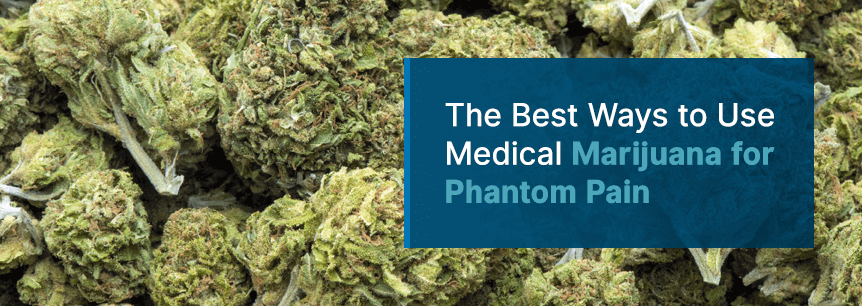
Use medical marijuana for phantom pain internally or topically to find relief. Some of the best methods of using the herb are as follows.
As your physician about medical pot and which strain will work best for your phantom pain. Not all doctors have experience in medical marijuana treatment. Therefore, if you are looking for a qualified cannabis doctor, look no further than Marijuana Doctors.
We provide a comprehensive list of doctors and dispensaries to help you begin your medical weed treatment. Book your appointment today to get started.
Find A Doctor Find A Dispensary